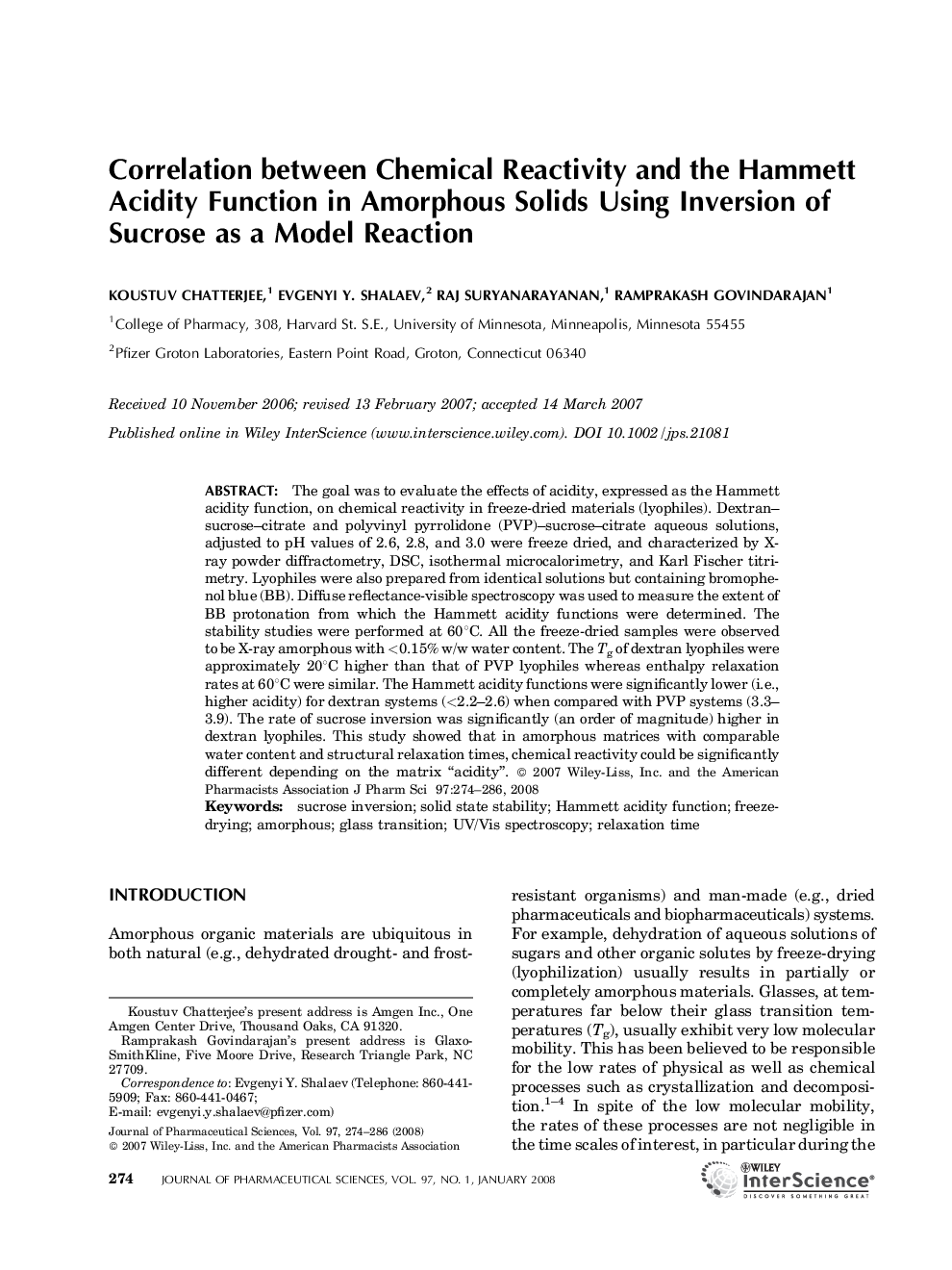| Article ID | Journal | Published Year | Pages | File Type |
|---|---|---|---|---|
| 2487595 | Journal of Pharmaceutical Sciences | 2008 | 13 Pages |
ABSTRACTThe goal was to evaluate the effects of acidity, expressed as the Hammett acidity function, on chemical reactivity in freeze‐dried materials (lyophiles). Dextran–sucrose–citrate and polyvinyl pyrrolidone (PVP)–sucrose–citrate aqueous solutions, adjusted to pH values of 2.6, 2.8, and 3.0 were freeze dried, and characterized by X‐ray powder diffractometry, DSC, isothermal microcalorimetry, and Karl Fischer titrimetry. Lyophiles were also prepared from identical solutions but containing bromophenol blue (BB). Diffuse reflectance‐visible spectroscopy was used to measure the extent of BB protonation from which the Hammett acidity functions were determined. The stability studies were performed at 60°C. All the freeze‐dried samples were observed to be X‐ray amorphous with <0.15% w/w water content. The Tg of dextran lyophiles were approximately 20°C higher than that of PVP lyophiles whereas enthalpy relaxation rates at 60°C were similar. The Hammett acidity functions were significantly lower (i.e., higher acidity) for dextran systems (<2.2–2.6) when compared with PVP systems (3.3–3.9). The rate of sucrose inversion was significantly (an order of magnitude) higher in dextran lyophiles. This study showed that in amorphous matrices with comparable water content and structural relaxation times, chemical reactivity could be significantly different depending on the matrix “acidity”. © 2007 Wiley‐Liss, Inc. and the American Pharmacists Association J Pharm Sci 97:274–286, 2008
